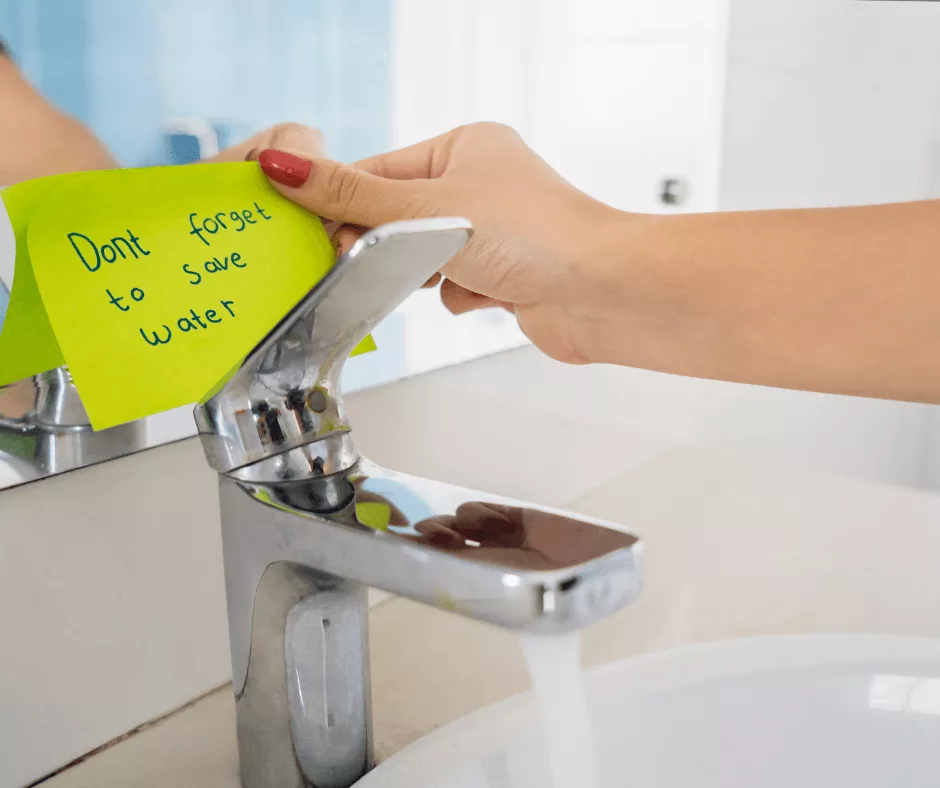In 2021, we all know the damage that overconsumption can have on our environment. Water is one of the most wasted resources that we have, often clean water runs down the drain without even being used. Being eco-friendly in your own home is easier than you think! This article will give you some tips and tricks on how to improve the water efficiency of your home and reduce waste. Water efficiency is vital in both domestic homes and the commercial buildings.
At Air Tightness Solutions, we conduct water efficiency calculations for new dwellings not only to comply with Part G of the Building Regulations 2014 but also to help save the planet and your pocket!
Methods to Improve Your Water Efficiency
Check for Leaks
Leaks can run your water bill up by ridiculous amounts if left unattended to. In most homes, if a leak isn’t affecting the integrity of the home it will usually be left unnoticed. Or, in other cases leaking toilets or taps will be ignored for months until excessive water bill arrives. One of the tips we give our customers who fail water efficiency calculations is to check for any leaking pipes inside and outside of the building.
If you have any leaks this can not only affect the structural integrity of the building but also create water pressure problems. Poor water pressure can lead to high consumption of water. So ensure that all your plumbing is in good condition at all times.
Showers Instead of Baths
It almost goes without saying that baths can use a lot of water. About 125 litres of water go into a bath, compared to just over 60 litres of water for a shower. By swapping baths for showers you can save 400 litres of water a week.
To pass a water efficiency calculation a building must use up to 125 litres of water per person per day. However, in 2019 the UK average was 141 litres of water per person per day, therefore changes must be made.
Update Your Sanitary Appliances
Living in Britain means we will never be short of rain! Water butts, or rainwater tanks, can store rainwater for you to use in your garden or as grey water inside the house. These tanks are connected to your building’s downpipe system to catch rainwater and store it in the barrel. A water butt can come in handy if you like to take care of your garden year-round but need to consider your water efficiency. By collecting rainwater, you’re saving yourself from using fresh water for your garden, improving your overall water efficiency.
You also have the option to add accessories to your tank that can purify and filter your water so that it may have a wider range of uses such as washing your car. Rainwater is free, so it’s best to take advantage of it. Using rainwater or greywater instead of a hose pipe can significantly improve your water efficiency.
Water Butts
In many commercial buildings, water closets (w/c’s) aren’t fitted with well-working lavatories or sinks. Modern toilets are much more water-efficient, using fewer litres per flush. More over, inefficient sanitary appliances are more likely to leak and cause unnecessary excess water to be used each week. Therefore, inefficient or broken fixtures will negatively affect the outcome of a water efficiency calculation.
Instead, consider replacing older model sanitary appliances with new efficient ones. Furthermore, while urinals do not use as much water as toilets, water-free urinals are also a popular choice for commercial buildings attempting to improve their water efficiency calculation. A water-free urinal uses a specially formulated liquid to create a seal and clean without the need for a 5-litre flush. Alternatively, use low-flush toilets to improve your water efficiency.
Water Flow Restrictors
To comply with Part G of the Building Regulations 2014 water consumption should be no more than 125 litres per day per person. If you’re not currently hitting that, you will need to improve your water efficiency. Water flow restrictors are brilliant for decreasing the amount of water used in domestic and commercial buildings.
These can be fitted to showers or taps to decrease the amount of water used per minute. They can save thousands of litres of water a year and are easily installed. However, on the downside water flow restrictors can also decrease the water pressure. This means, if you already experience low water pressure, a flow restrictor might not be the solution for you.
Behaviours
Most importantly, our behaviour is the best way to be more water-efficient. In workplaces, try putting up posters to encourage people to use less water during the day. Or at home, turn off the tap when you brush your teeth. There are plenty of small adjustments that can be made, whether you’re looking to save water in a new dwelling or commercial building, to improve your water efficiency.
Water efficiency calculations can give you insight into your water consumption and whether you pass current building regulations. If we find that you haven’t passed your water efficiency test, Air Tightness Solutions will be able to offer you advice on how to be more sustainable with water. For any questions, don’t hesitate to contact us.





